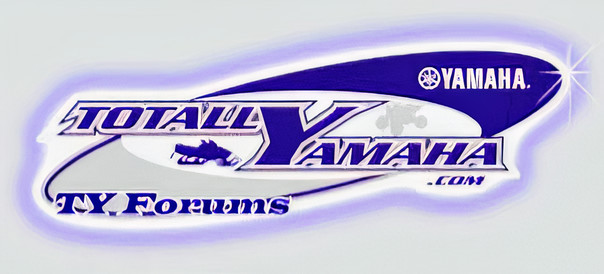Bakemono
New member
http://motorcycles.yamahablogs.ca/2008/05/27/vmax-the-legend/
Kind of a cool story how something that was rathar silly (a bunch of Japanse engineers watching a bridge race in America) inspired the creation of one of the meanest bikes ever made.It took a mere 10.30 seconds for the 1985 V-Max* to roar into the record books and the hearts of motorcycle adrenalin junkies around the world. A 130 lb drag racer by the name of Jay Gleason a.k.a. “Pee Wee” set the motorcycle world on its ear with his incredible ¼ mile run aboard a pre-production V-Max. Some cried foul because they felt the “pre-pro” machine was a “ringer”. In a blink of an eye, the V-Max legend had been established, much to the dismay of other manufacturers around the world.
In May of ‘85 the cries of foul were silenced when Cycle World magazine brought a production V-Max to the Bayland Raceway in Fremont, California and after a few shake down runs Mr. Max ripped through the ¼ mile at amazing 10.62 seconds with a trap speed of 129.87 miles an hour … with the mirrors still in place! On this occasion, the rider was 4-time US national drag racing champion Dale Walker who weighed in at “portly” 170lbs. By comparison, the legendary muscle cars of the early 70’s such as the Hemi ‘Cuda or big block Camaros were running ¼ mile times in the high 12’s to low 13 seconds range. The “King of Acceleration” had been crowned, be it the two wheeled variety or four.
How was the legendary V-max conceived? The story goes that a small group of Yamaha Japan staff members witnessed a “bridge race” over the Mississippi River while on a fact finding mission in the US. The bridge was 400 meters in length, and the competitors would start at one end of the bridge and race across to the other. Upon seeing this spectacle, discussions immediately ensued at the California head quarters of YMUS and senior planning guru Ed Burke began researching the market feasibility of a motorcycle that embodied the ideal of the American V-8 muscle car. First on the agenda was to find a suitable powerplant. The engineers in Japan had already been working on a V-4 engine for the Venture Royal touring bike. The problem was this engine only produced about 90 hp. Believe it or not; they considered the possibility of turbo charging the engine to get the required power but that was short lived. Then the idea for “V-boost” was floated. The premise being that at a certain rpm (6,000) two carbs would feed fuel to one cylinder. The resulting horsepower improvement was impressive. With some continued tweaking, the engineers bumped the power up to an amazing 145 ponies. As an extra bonus, the V-4 engine layout created an intoxicating exhaust sound that sounded like hot rodded big block V-8. As the engine progressed, the focus shifted to styling. The designers at GKDI in California wanted the engine to be the focal point of the V-Max and the concept of “engine maximum, body minimum” was born. The resulting design was totally unique in the market and V-max as we know it was born. The V-max was debuted to the world in the fall of ‘84 at the US dealer meeting; it would be a new model for the 1985 season.
The combination of power and unique styling plus Mr. Gleason’s historic ¼ mile time, allowed the new V-max to take North America by storm. Sales took off in the US and soon the rest of the world began to hear the rumblings of the V-max legend. In 1986, the V-Max hit the shores of France and eventually conquered the rest of Europe. What had started out as a model designed for the American public, had become an icon of acceleration around the world.
There was some talk about making a smaller V-max but it never happened. There were a small number of minor changes to the V-max along the way including new dish type wheels in the 80’s. In 1990 the ignition system was updatedhttp://motorcycles.yamahablogs.ca/wp-content/uploads/2008/05/85_vmax_3_600.jpg and in ’93 the fork size was increased to 43mm while more powerful 4-piston front brake calipers were installed. Twenty four years later… “the rest is history” as they say.
